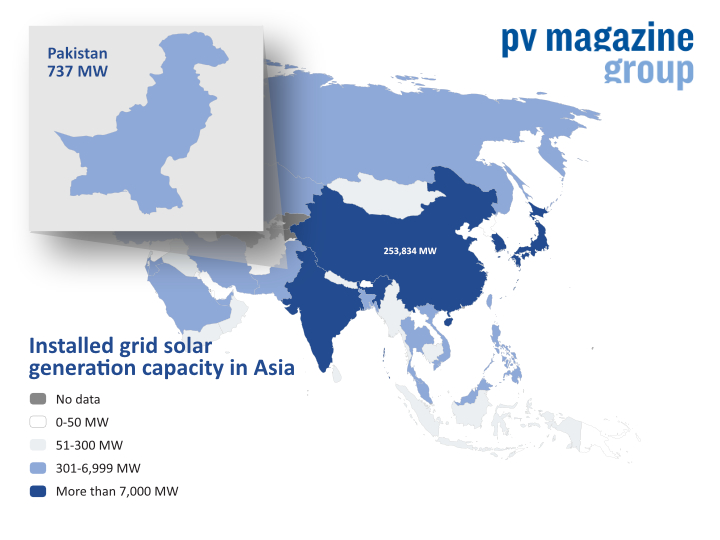The central role water shortages are expected to play in life in mid-century Pakistan have served to illustrate just how beneficial an energy transition would be for a country which is expected to be one of the world's most populous in 29 years' time.
With renewable electricity generation reportedly able to reduce water consumption by 95% – compared to fossil fueled power plants – a group of researchers from the Lappeenranta-Lahti University of Technology (LUT) has run the numbers through its energy system modeling software and concluded photovoltaics will do the lion's share of helping the nation realize its carbon reduction ambitions.
A paper published on Friday in the IET Renewable Power Generation publication of the London-based Institution of Engineering and Technology, predicted desalination will consume 19% of Pakistan's final energy demand in mid-century, emphasizing how potentially harmful plans for new coal plants could be.
AgriPV
Solar could disrupt the fossil fuel industry and help with two of the biggest sustainability challenges of our times: biodiversity loss and food production. pv magazine’s UP initiative this year shone a spotlight on agrivoltaics. Read our coverage here.
The report, prepared by researchers from Finland's LUT, stated Pakistan laid plans for new coal facilities in 2015 – when the generation technology was cheaper than solar and wind power facilities – under the China-Pakistan Economic Corridor infrastructure program which is a central part of the former's Belt and Road initiative. With solar now the cheaper option, the water-intensive nature of coal-fired power could strangle conventional power plant options, according to the LUT paper Renewable energy in Pakistan: Paving the way towards a fully renewables-based energy system across the power, heat, transport and desalination sectors by 2050.
The researchers used LUT's Energy System Transition model to estimate the evolution of Pakistan's power, heat, transport and desalination sectors on a hourly basis in five-year blocks from 2015-2050, with no new fossil fuel or nuclear facilities approved after last year.
The result was a projected fall in the levelized cost of energy to €56.10/MWh in mid century, versus an estimate of €70/MWh for the current energy system extrapolated to that date.
Popular content
The location of Pakistan's most promising wind power sites far from urban areas inclined the researchers to posit solar would meet 92% of total primary energy demand across the sectors in question by mid century, as “solar PV completely dominates the installed capacity in 2050,” according to the paper.
From the diagrams included with open access version of the study, that would appear to equate to around 390 GW of fixed-tilt, large scale PV capacity by 2050 to power the energy and heat sectors, plus around 60 GW of single-axis tracker mounted panels and around 80 GW of small scale installations, with the LUT academics stressing the important role ‘prosumers' would play in Pakistan's shift away from fossil fuels. Residential and commercial prosumers – who install panels and both consume their solar power and export excess to the grid – should be incentivized by a new energy regulatory framework to offer them payment for energy they export, stated the report, which also noted the vital role ever-cheaper battery storage and power-to-X technology could play in Pakistan's energy transition.
Transport
Power-to-X, or power-to-gas – the use of solar to generate the electricity to electrolyze green hydrogen from water – could be part of a decarbonized, synfuel-based transport system that would require a further 500 GW of solar capacity by 2050, according to the study, and using solar electricity to desalinate seawater could drive demand for another 460 GW or so of what would be a bonanza for the Pakistani solar industry.
As ever – in a report in which the researchers conceded their division of Pakistan into just northern and southern halves could be made more granular – the conclusion was a familiar one: “The actual challenge in achieving a renewable energy transition is not a technical or financial one, but the required political will to enable the transition.”
This content is protected by copyright and may not be reused. If you want to cooperate with us and would like to reuse some of our content, please contact: editors@pv-magazine.com.



A cursory glance at a Google Earth shot of Pakistan shows the Indus valley running north-east – south west and vast amounts of desert either side. Trivial to put PV in the desert and run short feeders to the population centres. The last sentence of the article says it all & given past history in Pakistan the country will fail, totally to realise its PV potential.